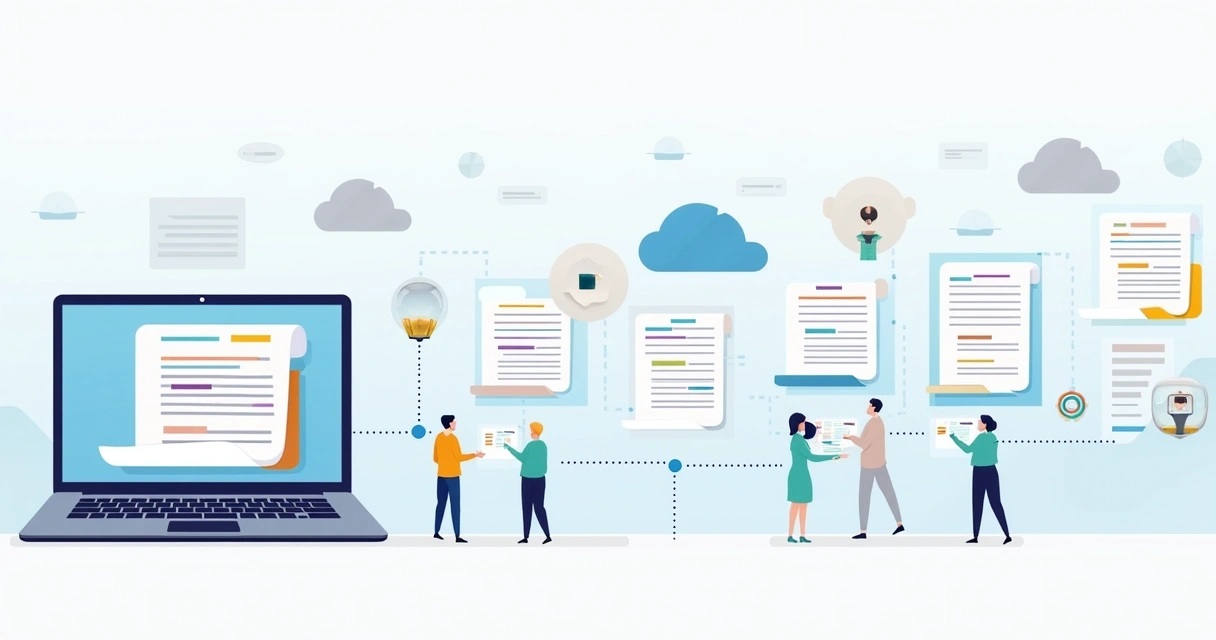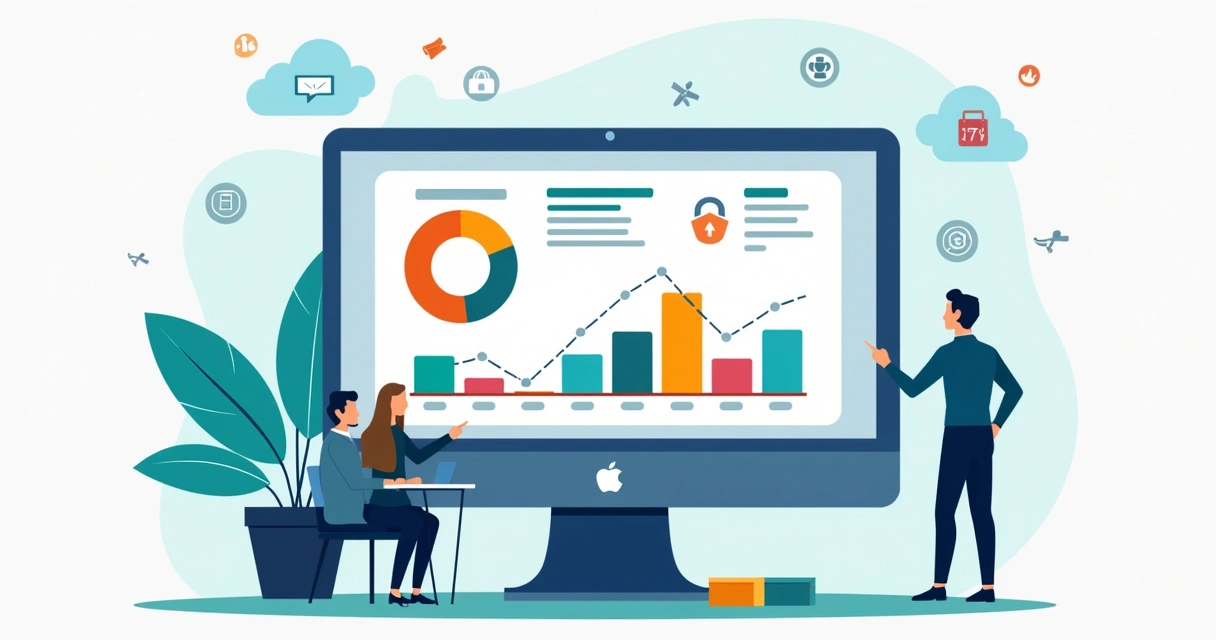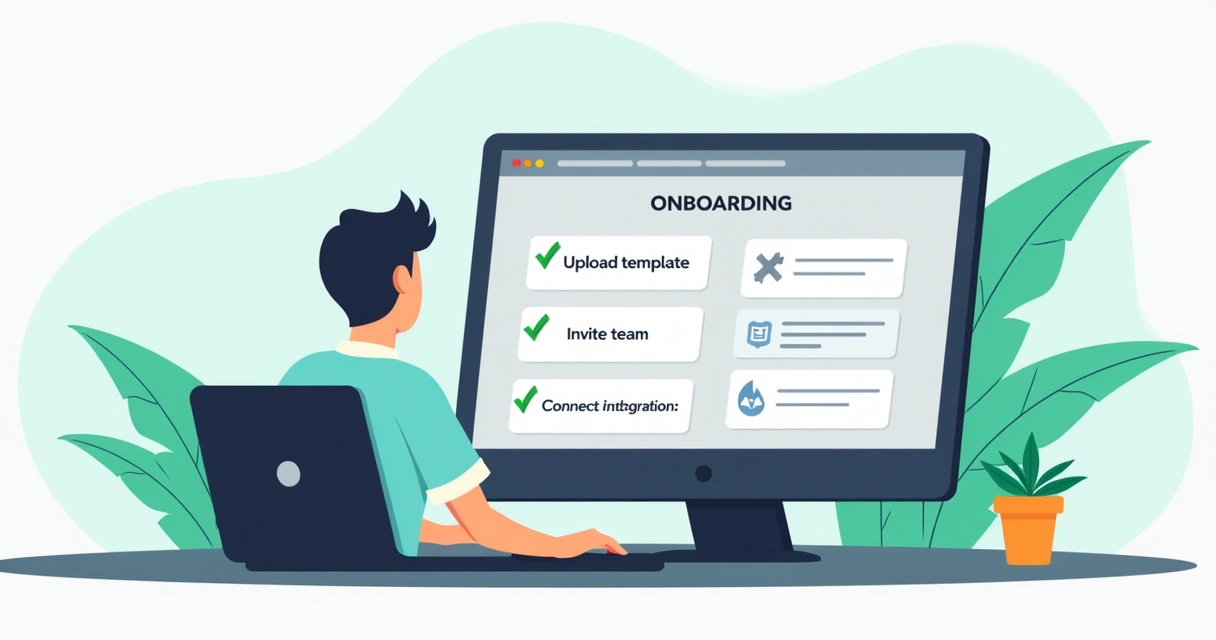Contracts are everywhere: your gym, your business, the house you rent, or the app you use for email. For organizations, contracts are the veins through which deals, decisions, and even disappointments flow. If you’ve ever lost a file, missed a renewal, or spent half a day searching through email threads for a signature, you’re not alone.
That’s where contract management software comes in. But choosing a solution in 2025 isn’t what it was five years ago. The tools are smarter. Integration levels are deeper. Compliance is not a side note, it’s central. So, what should modern users expect from contract management systems? How do you compare providers, and where does something like CloudSign.ie fit into your story?
This complete guide gives you the big picture, offers practical details, sneaks in a bit of opinion, and doesn’t shy away from what sometimes goes wrong. You’ll see how artificial intelligence, electronic signatures, and simple dashboards transform something as old as paperwork into a strategic advantage.
The right contract management tool doesn’t just keep you organized; it changes how you work.
Understanding contract management software
Let’s start simple. When people talk about contract management software, they’re usually thinking of a digital platform that handles every piece of a contract, from its very first draft, through negotiation, to renewal or archiving. Think of it as the headquarters for all your agreements.
But it’s not just a storage place or a better folder. Modern solutions (especially in 2025) automate steps, use machine intelligence to spot risky clauses, manage who approves what, and send reminders before you forget to renew or terminate a deal. When they do their job, contracts don’t just sit there, they move.
Is that necessary? In a word: yes. Studies highlighted by SNS Insider put the worldwide market at over $3 billion in 2023, and it’s forecasted to triple by 2032. The reason? Businesses need faster turnaround, bulletproof compliance, instant search, and digital audit trails. Old ways simply can’t keep pace.
Still, people hesitate. They like their shared drives. Maybe, in the back of their mind, they’re worried about switching. That’s fair. Even today, some contracts get printed, signed, scanned, and emailed back, as if it’s still 2005.
Too much time is lost in email chains and forgotten attachments.
But the tide is turning fast. From cloud storage and mobile access to automatic reminders, today’s software removes headaches most users thought were simply part of the job.

Main features: what makes a smart solution in 2025
Some platforms might look similar at first, but the line between “just okay” and “truly helpful” is thin and real. The strongest contract management software now combines smart automation, usability, and compliance.
Artificial intelligence: your silent assistant
There was a time when “AI in contracts” meant fancy search functions. Not anymore. In 2025, smart assistants do more than fetch. They:
- Spot risky clauses, flagging unusual language or missing details.
- Suggest alternative terms based on your playbooks or previous deals.
- Summarize complex agreements into readable bullet points.
- Extract dates, payment terms, and escalation triggers automatically.
- Send reminders or alerts when deadlines or renewals approach.
As reports from Mordor Intelligence reveal, AI and machine learning now play a major role, pushing accuracy and consistency far beyond what a human team could do manually. With CloudSign.ie, for instance, AI isn’t an optional extra. It’s built right in, helping you catch mistakes and seize opportunities in every contract.
AI is your second set of eyes, and it never gets tired.
Electronic signatures: speed with security
If you’ve ever waited days for a signed contract to return, you know the pain. Now, an electronic signature transforms that timeline into minutes.
Modern contract management platforms not only let signers add verified digital signatures from any location, but they keep a forensic trail, who signed, when, on what device, and even from which IP address. This answers compliance needs in strict environments (like financial or healthcare) and helps prevent disputes later.
If you’re interested in the ins-and-outs of electronic signatures, especially for Irish law or remote businesses, CloudSign.ie’s beginner’s guide to electronic signatures offers practical advice, from legality to implementation steps.

Approval workflows and collaboration
Signing isn’t everything. Sometimes a contract needs a line manager’s approval, or legal must review a clause before it’s finalized. The best solutions provide:
- Customizable workflow steps (for any team: sales, legal, finance, procurement, etc.)
- Automated routing so nobody has to chase signatures or approvals by email
- Role-based permissions for editing, commenting, or viewing, so sensitive details stay private
- Real-time commenting and track changes for transparent communication
A well-built system like CloudSign.ie means nothing slips through the cracks. Each contract moves smoothly from one step to the next, visible at all times.
When everyone knows what comes next, contracts don’t get stuck.
Compliance and legal validity
No matter your industry, compliance with data protection and contract law is simply non-negotiable. The European Union’s GDPR sets standards for the handling and storing of personal data; violating those is both embarrassing and expensive.
Most modern solutions ensure:
- Legally binding digital signatures (with audit trails)
- Document retention policies and secure storage on certified servers
- Automatic backup and disaster recovery
- Access controls to protect sensitive contract data
For organizations working under Ireland or EU law, understanding legislative requirements for e-signatures brings peace of mind.
Compliance is more than a checkbox, it’s your reputation on the line.
Integrations: connecting your contract data
A contract doesn’t live alone. It pulls data from your CRM, connects to cloud drives, notifies teams in Slack, and sometimes needs to kick off a billing process elsewhere.
Strong software includes open APIs or built-in integrations to connect with tools you already use, whether sales (like Salesforce), project management, or HR systems. CloudSign.ie, for example, includes integrations with Google Drive, Slack, and popular CRMs out of the box, so contracts always find the right place and people, automatically.
Dashboards and analytics: see the story, not just the files
Numbers tell tales. The difference between “I think we’re getting faster” and “We cut our contract time by 48% last quarter” is data. The top contract management systems now provide dashboards that highlight:
- Contract status (which are stuck, pending, approved, signed, expired)
- Renewal dates and auto-renewal risks or opportunities
- Volume and value of contracts by type, team, or customer
- Bottlenecks in the approval process
These dashboards are often customizable, making it easy to spot trends, justify your next hire, or prepare for an audit, without needing an analyst on your team.

The contract lifecycle: what happens from start to finish
If you’re picturing contracts as a simple one-and-done event, it’s time to update that mental image. Managing a contract well means handling several phases:
- Drafting and creation , Building templates that match your standards, adding terms and conditions, merging information from sales or procurement databases.
- Collaboration and negotiation , Multiple rounds of edits, commenting, and negotiating terms with external partners.
- Approval and execution , Routing through the right people, gathering electronic signatures, locking final terms.
- Storage and search , Securely archiving documents, making sure they’re instantly searchable, indexed, and backed up.
- Monitoring and renewal/expiry , Automated reminders for renewals, reviewing contract performance, risk management, and regulatory review.
- Analysis and reporting , Reviewing contract data for trends, opportunities, risks, or compliance issues.
All these steps are managed in one place by modern solutions, no more spreadsheets, email folders, or lost sticky notes. And with something like CloudSign.ie, you get the benefit of standardized workflows at every phase.
Standardization means no step is forgotten and nothing depends on memory alone.
Centralization and visibility: why it matters
Even now, many teams use contract folders stashed away on desktops, email accounts, or shared drives. Each version of a contract lives somewhere, a naming convention mess of “final_v4_last_revision.pdf.”
A truly useful contract management system centralizes every agreement, every attachment, every approval, into one organized location:
- Instant search: Find any contract by name, partner, date, or even a specific clause.
- Controlled access: Team members see only what they need. Sensitive deals stay restricted.
- Real-time visibility: Know at a glance who’s working on which contract and what’s pending.
- Audit logs: A complete trail of who accessed, edited, or signed, which helps with disputes or legal questions.
This isn’t theory, modern solutions like CloudSign.ie deliver it as standard.

Reducing risks and staying compliant
Let’s be blunt. Even a tiny contract oversight, like missing a renewal deadline or forgetting a regulatory update, can cost thousands, or occasionally, millions.
Strong contract management platforms are built to help:
- Track all deadlines and renewal terms, no matter how far in the future.
- Meet GDPR and other privacy laws, with clear controls over personal data.
- Alert for missing signatures, outdated templates, or unusual clauses that don’t match company policy.
- Provide instant access to documentation for audits or dispute resolution.
When you know where everything is, nothing is left to chance.
For Irish businesses keen to avoid costly slip-ups, this isn’t just an improvement, it’s sanity saving. If you want to make sure your processes protect you, here’s how small businesses can use electronic signatures to move faster (and safer).
Choosing a solution: how do you compare providers?
The list of providers can feel endless, DocuSign, Dropbox Sign, PandaDoc, SignNow, and many others. Truthfully, most offer the basics: storage, renewal reminders, and electronic signing. But those table stakes aren’t enough in 2025.
So, how do you sort the best from the rest? You need to measure solutions against criteria that actually matter, day to day.
Security and compliance: not all systems are equal
Ask tough questions:
- Where is your data stored, EU servers, global cloud, or local devices?
- Is data encrypted in transit and at rest?
- Do they provide audit logs and granular access controls?
- Are certifications up to date: ISO, GDPR, local privacy laws?
Some tools, like Dropbox Sign or DocuSign, have decades of trust, but CloudSign.ie, for example, matches that with local Irish expertise and alignment to regional privacy needs, which can be a real advantage for domestic businesses.
Usability and experience: your workflow, not theirs
A fancy dashboard is useless if it’s confusing, or if your team won’t use it.
- Is onboarding fast? Can a typical team start using it in under a day?
- Is there 24/7 support, robust documentation, or live training?
- Do templates and workflows match your industry out of the box?
- How easy is it to add new users, manage permissions, or tweak approval steps yourself?
This is where CloudSign.ie comes out strong, offering a free plan, beginner-friendly design, and templates for both individuals and teams.
Integrations and flexibility
You shouldn’t have to change your internal systems to match your contract platform. The solution should fit into your world, not the other way around.
- Does it link with Salesforce, HubSpot, or Microsoft Dynamics?
- How about calendars or accounting tools?
- Is there API access for custom workflows?
- Are there plugins for cloud storage (Google Drive, OneDrive) or communication (Slack, Teams)?
Competitors might offer flashy integrations, but there are often extra charges or technical hurdles. CloudSign.ie tackles integrations as a baseline feature; even the free tier isn’t stingy about what you can connect.
Pricing and scaling up
Hidden costs are the bane of IT buyers. Some vendors limit users or envelopes, restrict helpful integrations to premium tiers, or ramp up pricing by team size.
CloudSign.ie’s approach is genuinely different, offering a “free forever” plan for individuals (with 1 sender and up to 21 envelopes each month), no small print, no locking basic features behind expensive upgrades.
For larger teams, the cost stays predictable. This makes it far easier to budget, and you can scale only when you actually grow.
Transparency in pricing is just as valuable as transparency in contracts.
Market growth, regulations, and the big trends in europe and worldwide
Let’s take a wide-angle lens for a moment. According to recent projections from SNS Insider, the global market for contract management tools is set for rapid growth until at least 2032.
In Europe, Grand View Research points out that strict data privacy rules lead more organizations, private and government, to digital transformation, especially with GDPR as a driving force for contract management upgrades.
Meanwhile, across Asia, government programs pushing for “digital economies,” like those in India and China, make contract automation not just popular, but almost standard over the next decade, according to trends from Mordor Intelligence.
This surge has an impact. Software isn’t just for the Fortune 500. SMEs, freelancers, and public sector organizations all now demand smarter, safer, and more connected contract platforms.
The rise of dashboards and analytics: decision-making, not just record-keeping
One of the biggest changes lately? The shift from “let’s just keep contracts organized” to “what can we learn from our contracts?”
Dashboards and analytics now play a starring role. They break down contract cycle times, identify contract types causing delays, track contracts lost to inaction, and spot overlooked renewal opportunities.
In larger teams, reporting dashboards drive cross-department coordination; executives see where sales are stuck, legal monitors risk, and finance plans for both cash-in and cash-outflows. Even smaller teams find them valuable, sometimes a colorful chart beats a ten-page summary.
Data kills finger-pointing and drives smart decisions.
Trends for 2025 and the future: what’s next?
No guide is complete without a look forward. Here’s what’s coming:
- AI gets personal: The best solutions (like CloudSign.ie) use AI not just for risk detection, but to understand each user’s custom playbooks, contract language, and deal structure preferences.
- Blockchain and smart contracts: Blockchain provides tamper-proof ledgers and auto-enforced “smart contracts” for certain industries, mostly in finance and logistics. For most businesses, though, it’s still emerging, but keep an eye on rapid developments in this area.
- Mobile-first everything: More approvals, signatures, and negotiations are happening on mobile, and platforms must be touch-friendly and 100% secure everywhere.
- Better self-serve onboarding: Gone are the days when only IT could adopt new tools. Expect easier DIY setup and migration guides.
- Focus on remote and hybrid teams: With distributed work here to stay, remote-friendly features (like timezone-aware notifications, collaborative editing, and multi-device support) are no longer optional.

Real benefits for teams of any size
Sometimes people ask, “Is contract management software just for big companies?” That’s an old myth.
- Freelancers use it to protect their livelihood and ensure faster payments.
- Small businesses avoid lost deals due to lost paperwork or missed deadlines.
- Large enterprises gain from audit-friendly records, bulk workflows, and integration with multiple teams.
- Remote teams get the same visibility and process control as headquarters, no matter where team members are.
Whether you’re an individual, a startup, or a multi-national, platforms like CloudSign.ie are designed to scale up or down. With flexible pricing tiers and a genuinely useful free plan, there’s no real barrier to entry anymore. Getting started with free electronic signatures is straightforward for anyone.
Contracts should serve you, not slow you down.
Common mistakes (and how smart software prevents them)
Not every adoption story has a happy ending. Here are mistakes teams still make, and how modern software (CloudSign.ie included) can help avoid them:
- Relying on email chains for sign-offs: Email isn’t made for contract approval. Links get lost, attachments get overwritten, and evidence vanishes. CloudSign.ie tracks every change and signature, no confusion, no lost files. As noted in this guide on what not to do when signing documents online, email-based workflows can open you to security risks.
- Ignoring reminders and renewal dates: Far too many companies let agreements roll over (often on less favorable terms) simply because nobody tracked expiry dates. Automated reminders keep everyone updated, so nobody’s in the dark.
- Storing contracts on local desktops: Hard drives crash, people leave, and laptops get lost. Secure, cloud-based storage ensures contracts are always safe and searchable, even if a device disappears.
- Skipping compliance controls: Especially with GDPR, storing personal data outside of approved systems can be dangerous. Modern platforms keep you aligned with legal requirements by default.
If your process is built on workarounds, it’s time to rethink.
Shortcuts usually end up longer than you think.
Case in point: remote and hybrid teams thrive with digital contracts
The pandemic changed work forever. Even now, offices are hybrid and teams are spread across countries (or continents). What used to require signed paper and in-person meetings now happens in Slack channels, video calls, or shared digital spaces.
A contract signed, stored, and tracked in the cloud doesn’t care if you’re in Dublin, Cork, or working from a cottage in Kerry. All that matters is security, access, and traceability.
Dashboards, notifications, and approval processes work in real-time, closing the distance between HQ and any remote location. This is one more reason why software like CloudSign.ie isn’t just for big city law firms, it’s for anyone who needs to get business done, today.

How to get started with the right contract platform
All this may sound like a lot, but starting doesn’t have to be hard. In reality, most teams transition step-by-step. You might just begin handling NDAs and vendor agreements, then add sales deals and HR documents later.
Here’s a simple path:
- Map your current process: Where do contracts start? Who approves them? What goes wrong the most?
- Test a free plan: Platforms like CloudSign.ie let you experiment without commitment, for as long as you want.
- Migrate your templates: Move your most-used agreements first. See how automated reminders and e-signatures speed things up.
- Invite your team: Get feedback, tweak workflows, and slowly include more contract types.
- Review analytics: Use the built-in dashboards to track improvements, response times, and risks. Adjust as you learn.
A stepwise approach feels safer and puts you in control. Most users say that, after going digital, they’d never go back to manual processes.
Start small, then let the benefits pull you forward.

Final thoughts: making contracts a strong point, not a stumbling block
Contracts aren’t just paperwork, they’re the structure behind trust, deals, and growth. In 2025, contract management software isn’t an abstract idea; it’s a real-world advantage, whether you’re a solo operator or leading a global team. With the rise of AI, e-signatures, and powerful dashboards, you can forget the headaches, and focus on the next big thing.
CloudSign.ie exists to make sure contracts move, connect, and deliver real value. There’s almost no barrier left to trying digital signing and contract management for yourself. If you’re tired of chasing PDFs, missing deadlines, or re-inventing the wheel each time, maybe it’s time to see how this new generation of contract tools can change things.
Your next contract can be smarter, safer, and faster.
Ready to simplify your contract process? Start with CloudSign.ie’s free plan and see the difference for yourself.
Frequently asked questions
What is contract management software?
Contract management software is a digital system that helps organizations oversee the entire lifecycle of contracts. This includes creating and drafting agreements, enabling team collaboration, electronic signing, storing documents securely, and handling renewals or expirations. The software automates many routine tasks, improves access to files, and provides a transparent record of every step in the process. With modern contract management solutions, even small teams can handle contracts professionally and safely.
How does contract management software work?
These platforms bring all contract-related activities into a single online space. Users can upload templates or create new contracts, invite team members or outside partners to review or sign, track approval status, and set reminders for renewals or deadlines. Smart tools like AI can highlight risky language, pull out key dates, or recommend changes. Everything is stored in the cloud, so your team can access contracts securely from anywhere, and audit trails show who did what and when.
Is contract management software worth it?
For most organizations, yes. Automating contract workflows saves time, reduces mistakes, improves compliance, and provides instant access to important files. Teams avoid losing deals from slow approval or missed deadlines. For smaller businesses (and even freelancers), flexible or free plans make adoption low-risk. Larger teams value detailed analytics and integrations. CloudSign.ie, for example, offers a free tier and user-friendly setup, making the investment in contract software an easy decision for many in 2025.
What are the top contract management tools?
There are several well-known platforms, such as DocuSign, Dropbox Sign, PandaDoc, and SignNow. Each offers basic features for signing and tracking documents. CloudSign.ie stands out by focusing on Irish and EU regulations, deeper integrations, and a genuinely useful free plan. Your best choice depends on your needs: security, usability, integrations, and price. Research and free trials help teams compare what fits best. For beginners, this electronic signatures guide is a helpful starting point.
How much does contract management software cost?
Pricing varies. Some solutions charge per envelope or signature, others by user or based on advanced features (like analytics or integrations). Many platforms offer free trials or limited free plans. CloudSign.ie, for example, provides a free forever plan for individuals (1 sender, 21 envelopes per month) and clear, scalable pricing for larger teams. It’s best to check what features you get at each price tier and avoid paying for things you’ll never use. Thoughtful comparison is key.
